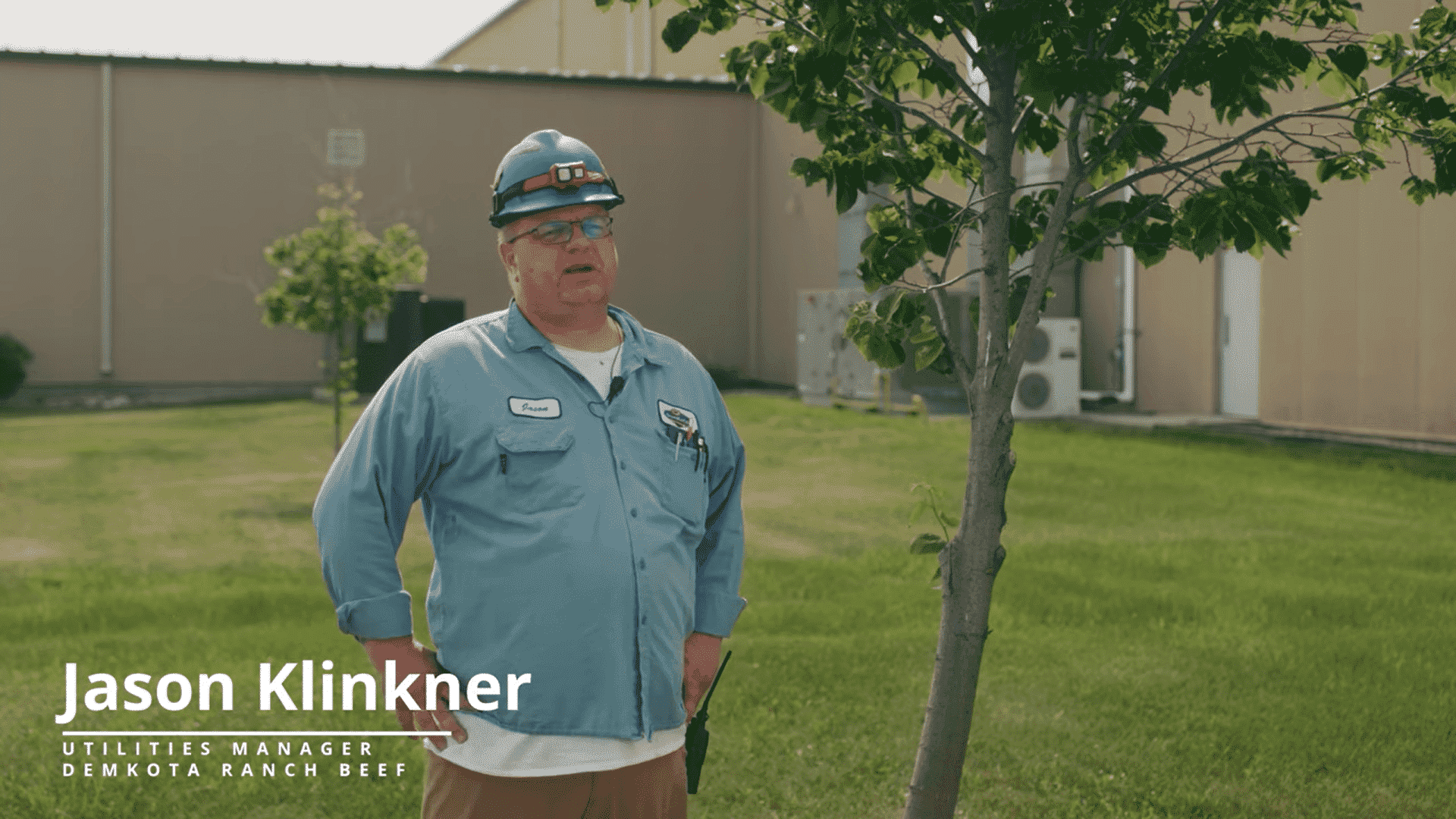
Case Studies: How Industrial Air Compressors Boost Productivity in Various Industries
January 17, 2024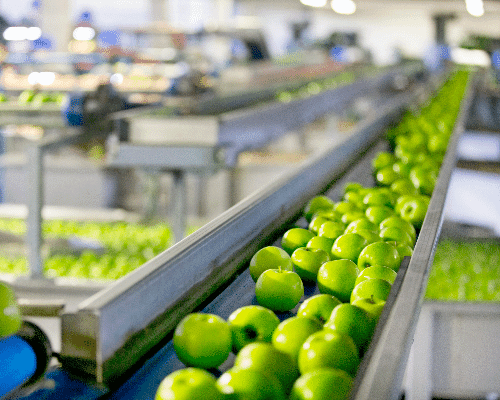
How to Choose the Right Rotary Screw Air Compressor for Your Business
January 31, 2024The Importance of Industrial Air Compressors in the Mining Industry
Kaishan USA | January 24, 2023 | Uncategorized
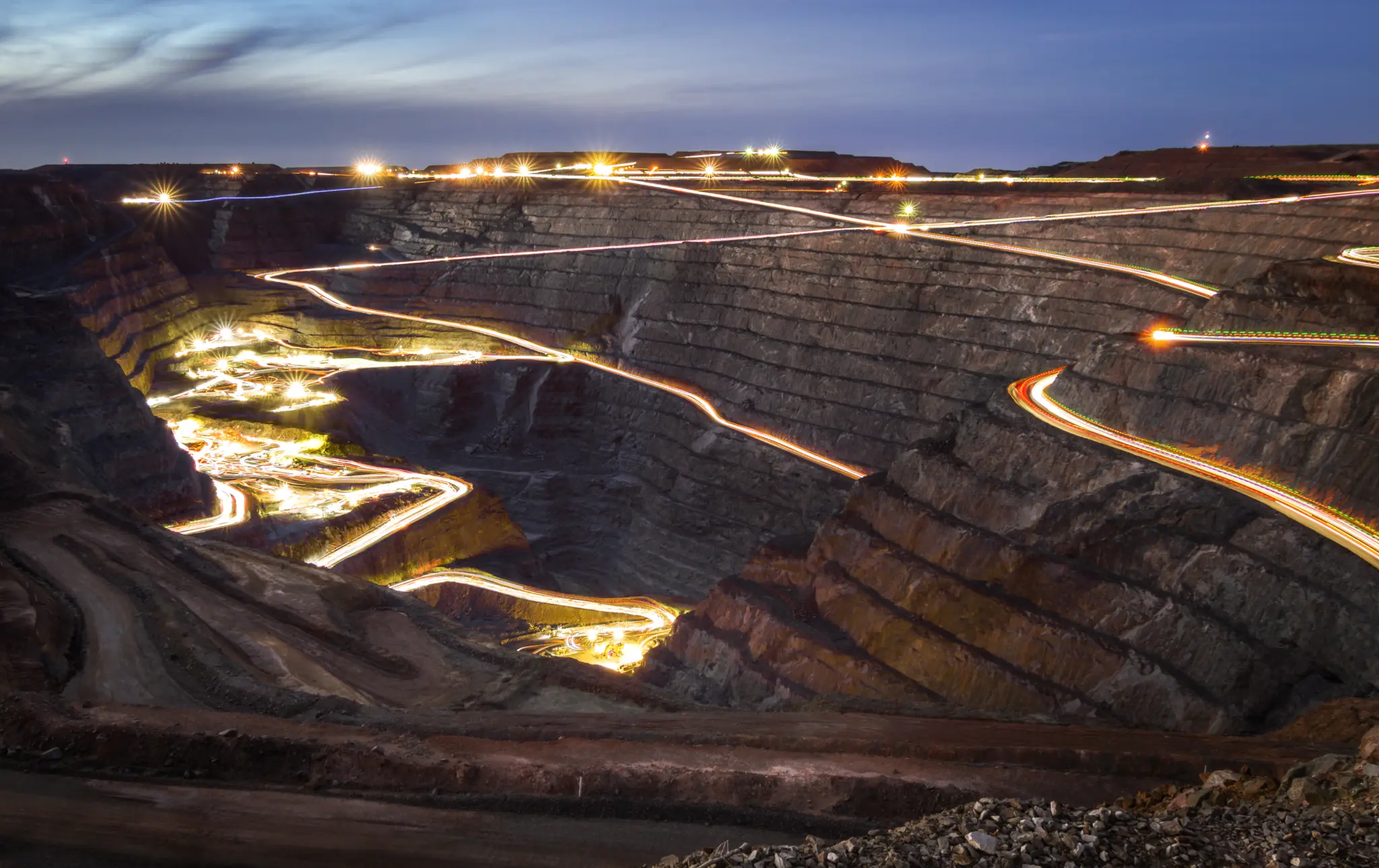
The Kalgoorlie Super Pit, one of Australia’s largest open-pit gold mines, is more than three miles long, a mile wide and 650 yards deep.
Mining and compressed air have a long and distinguished history, with many of today’s leading air compressor manufacturers getting their start in mining. They began by making air compressors to power their drilling equipment. And thus initiated a close tie between the two.
Some manufacturers, including Kaishan, continue to make products for the mining industry. In our case, a sister company still makes drilling rigs and drilling equipment sold in many locations around the world.
This long-term, mutually beneficial relationship between the industry and the technology gives air compressor manufacturers deep insight into the needs of their mining customers. As a result, compressed air supports the sector at almost every step in mining and mineral recovery.
Benefits of Compressed Air
Air compressors offer mining and mineral processing operations several critical benefits:
-
- Reliability. Compressed air offers a dependable power source for many kinds of mining equipment, from drilling and blasting equipment to hand tools and pneumatic instruments. It is a fourth utility (along with water, electricity and natural gas), serving a wide range of applications and reducing downtime.
- Safety. Compressed air systems are a natural for this industry because they are relatively safe, an essential concern in any environment, especially mines. Compressed air is a non-combustible power source when electricity or natural gas present safety hazards. It also provides ventilation for deep-mining operations as well as emergencies.
- Efficiency. Compressed air technology has been in use for centuries, with today’s equipment achieving high levels of efficiency and durability.
- Versatility. Rugged and reliable under the harsh conditions, air compressors can be used in a broad range of applications, from drilling and blasting to refining and material handling.
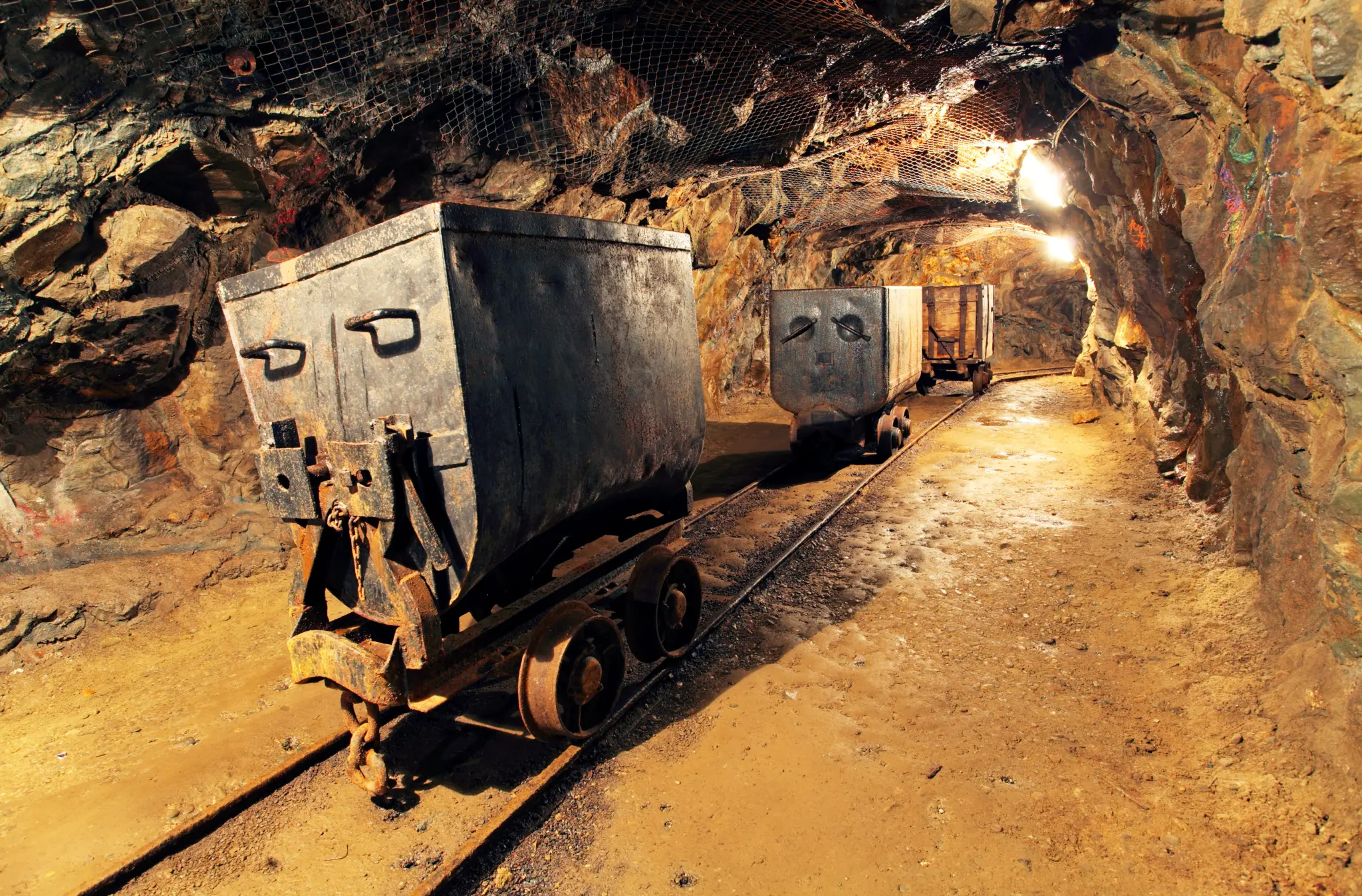
Mines can run thousands of feet below the surface, making it challenging to supply breathable air.
Life-Saving Ventilation/Ventilation That Saves Lives
One of the most important uses of compressed air in mining is in providing the ventilation that saves lives.
The U.S. Department of Labor’s Mine Safety and Health Administration requires that mining operators always make breathable air available to miners. It lists compressed air as one of a few possible sources.
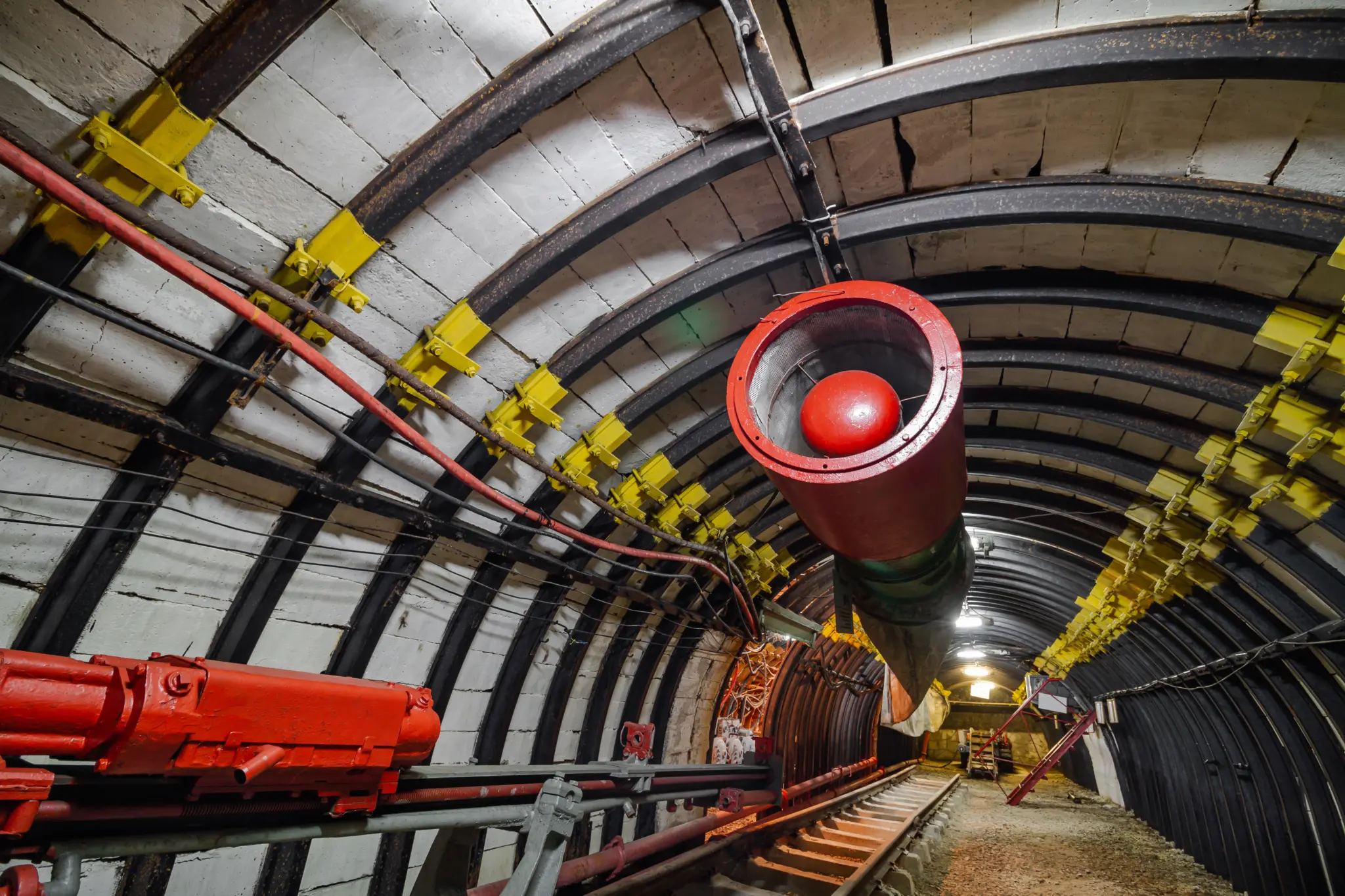
Mining equipment and ventilation system in a coal mine.
Some of the compressed air piping can be miles long, reaching deep mine tunnels and refuge bays that protect miners and give them shelter during emergencies or fires.
Air compressors, vacuum pumps and blowers are also used to extract lethal methane gas, keeping it from building up and causing breathing problems.
Kaishan recently helped a Canadian gold mine develop an emergency air application for shelters thousands of feet below the surface, using compressor power to remove carbon dioxide and other contaminants and replace it with fresh air and oxygen.
How Air Compressors Are Used
Because of their longstanding presence in the mining industry, air compressors play a role in all areas of the mining industry.
Powering Mining Equipment
Compressed air provides the power to drive rotating drill bits and other mining equipment.
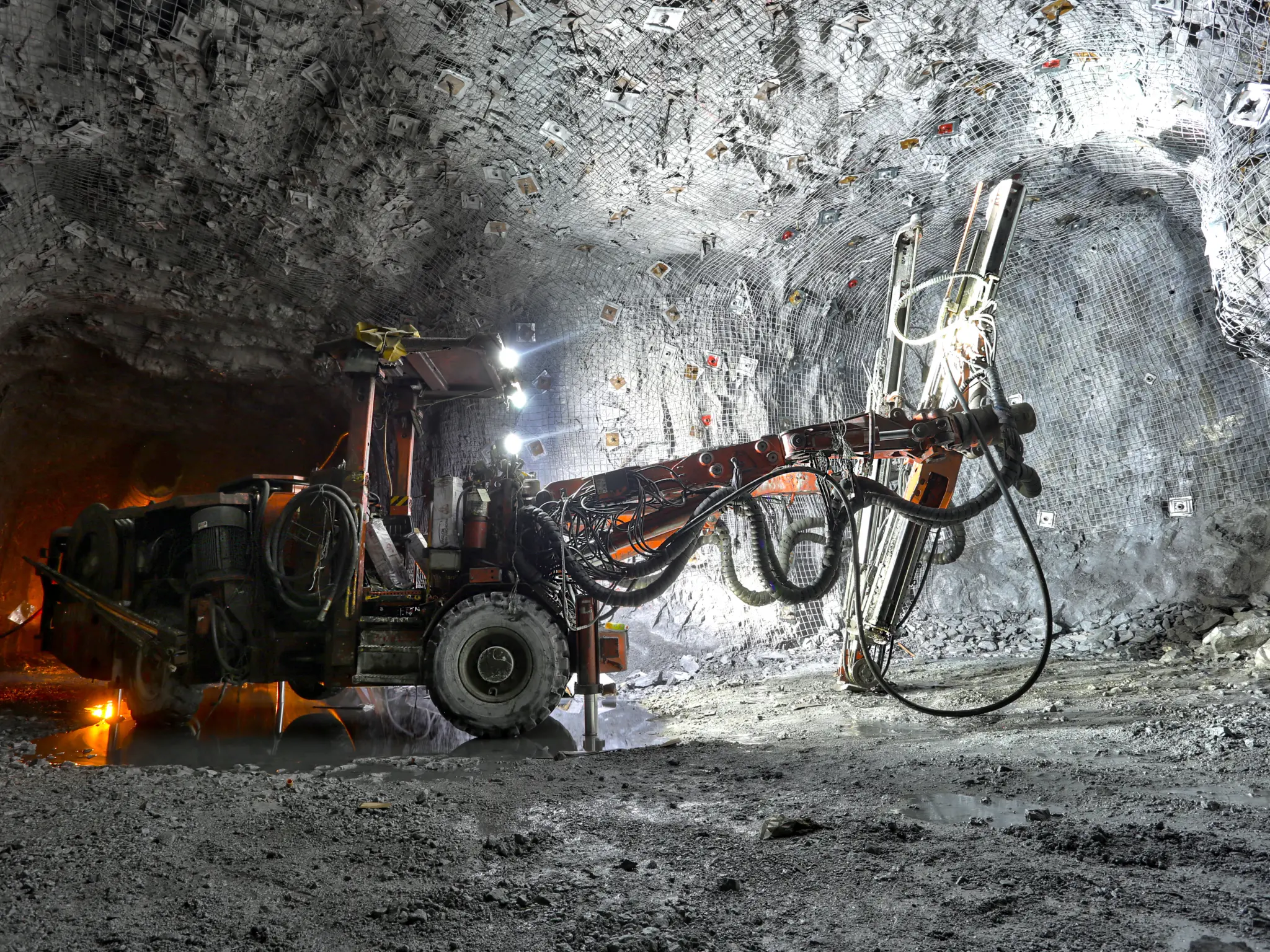
A jumbo drilling rig used in an underground mine.
Pneumatics
Power wrenches, drills, hacksaws and a wide range of hand tools rely on compressed air for their power source, avoiding electricity use.
Process Air
Compressed air is used throughout the smelting and refining processes, helping the mining company extract the product from ores. It generates the bubbles coming out of the spargers, the porous devices at the bottom of a settling tank.

A flotation pool at a copper mine near Tucson, AZ.
Low-pressure air is used in flotation cells to help separate metals like chrome, copper, lead, aluminum, zinc, platinum and gold from the slurry. High-velocity air also helps set off explosives safely.
Moving Materials
Compressed air powers material handling equipment and is even mixed or fluidized with materials like coal for easier handling.
Cleaning
Air compressors are involved in everything from cleaning filters to keeping mining equipment free of dirt and debris. Low-pressure air helps remove inorganic and organic matter from the activated carbon used in the leaching process.
Wastewater Treatment
Low-pressure blowers help circulate air through the wastewater from the refining process, allowing the water to be reclaimed and reused. Since most mining operations occur in remote, water-challenged locales, water conservation is critical.
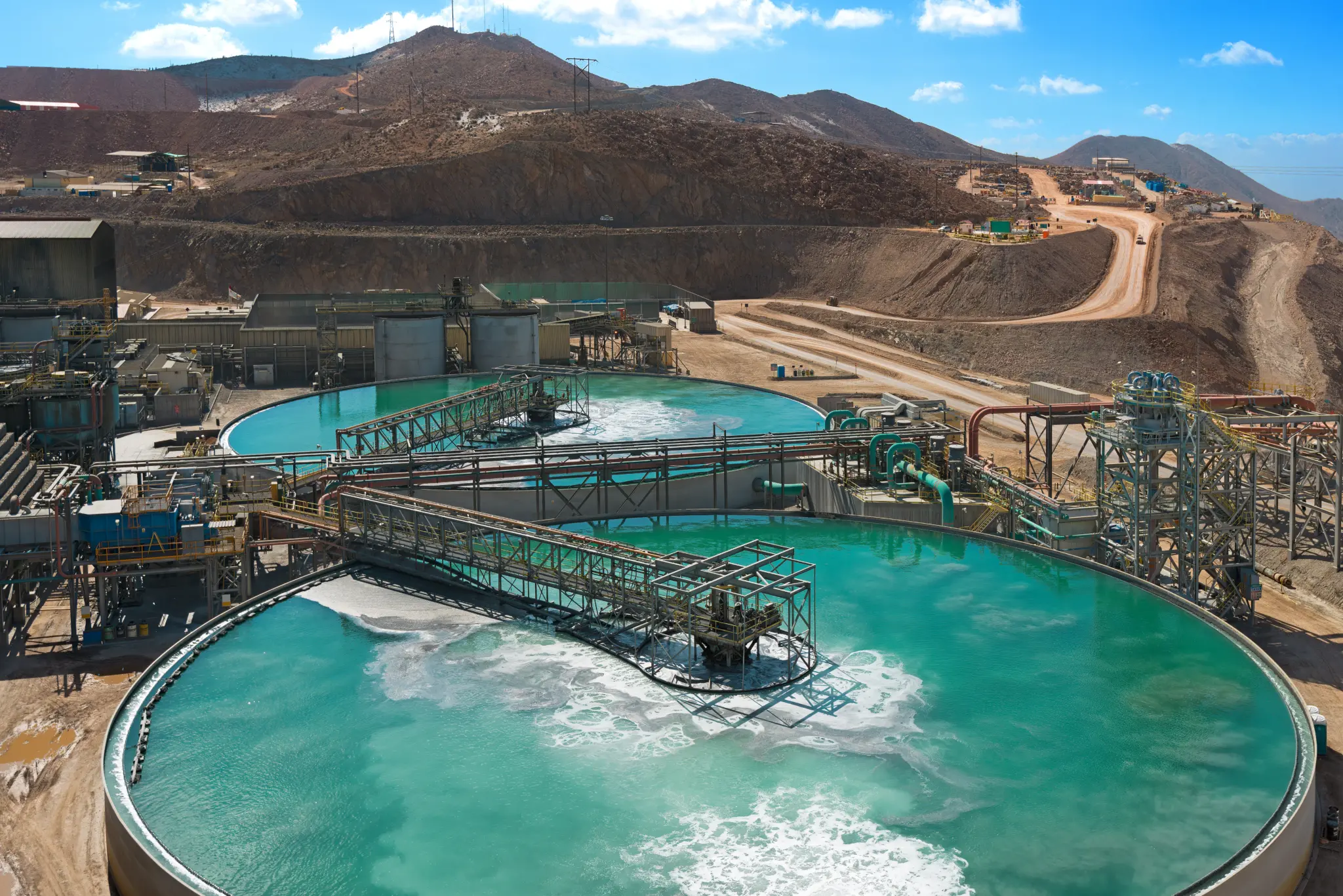
Water treatment facilities in a copper mine and processing plant.
Key Applications
Rotary Screw Air Compressors
-
- Blasting
- Cleaning
- Drilling
- Instruments and tools
- Material handling
- Methane gas extraction
- Smelting and refining
- Spargers (agitation)
- Ventilation systems
Low-Pressure Blowers
-
- Flotation cells
- Leaching
- Material handling
- Wastewater treatment
Compressor Best Practices for Mining Operations
Most mining operations choose one of the three major types of compressors: centrifugal, reciprocating or rotary screw air compressors. Each offers some unique benefits, depending on the application.
Generally, a centrifugal air compressor is most cost-effective for high-volume applications (above 2,500 CFM). A reciprocating compressor is the best choice for low-volume applications (less than 20 CFM). But rotary screw air compressors are the best for everything in between. For more on the subject, read our blog post, “Which Type of Air Compressor Is Best for Your Application?”
Right-Size Your System
Be careful not to oversize your system, especially if you’re using a rotary screw air compressor. It may seem counterintuitive, but with air compressors, “too much” is almost as bad as “not enough.”
Here’s why. Screw compressors are designed for a 100% duty cycle. Run them significantly less than that, and you’ll waste energy, reduce equipment lifetime and perform more maintenance. Similarly, when there’s not enough gas for a centrifugal air compressor to compress, it loses its ability to transfer energy from the shaft to the fluid, causing a dangerous reversal of flow, or surging.
As a result, do not try to size your compressor with “room to grow.” If you need help sizing your system appropriately, contact your local air compressor consultant.
Keep Header Pressure as Low as Possible
Most rotary screw air compressors use load/no load controls, sometimes called online/offline. With this approach, you set load and unload pressures, such as 115 PSIG and 125 PSIG, respectively.
That gap of 10 PSIG (pounds) is called the pressure band. The goal is to keep your rotary screw air compressors from loading and unloading too fast because starting and stopping too often increases thrust loads, reducing bearing life. That process can exceed the maximum starts per hour on electrical components, specifically the inrush current on the motor. You can conserve energy by setting the header pressure as low as possible.
Stop Leaks
Compressed air systems lose between 30% and 50% of their volume to air compressor leaks, with poorly maintained systems running as high as 80%.
As a result, one of your first tasks is determining how many leaks you have. And estimating how much you can save by fixing them. (To find out how much you might save with an audit by an air compressor professional, see our blog post, “How an Air Compressor Audit Can Reduce Operating Costs.”)
Don’t Ignore Your Pipes
More than 80% of leaks occur in the compressed air distribution system. What air compressor pros call “the dirty 30”—the last 30 feet before the end-use application. The dirty 30 includes hoses, reels, filters, regulators or lubricators on the piping that connect the air supply to your machinery. Plus, even end-use tools can have internal leaks, especially if they are old or poorly maintained.
The situation is complicated by the fact that 80% of leaks are inaudible. For more on leaks, see our blog post, “How to Find and Stop Air Leaks.”
Maintain! Maintain! Maintain!
It’s essential to make sure your compressed air system is properly maintained. Filters are critical. Clogged filters will impede and eventually block airflow, causing energy loss that is both unnecessary and avoidable. As a result, we recommend:
-
- Checking the differential pressure in inline compressed air filters
- Regular cleaning of intake vents
- Checking and cleaning inlet air filters
- Inspecting and cleaning your heat exchangers based on your environment
And with dryers, you’ll want to ensure that drains and traps are clear and open.
Conduct Air Audits Regularly
An air compressor audit (a more detailed evaluation than a distributor’s monthly or quarterly assessment) can produce significant benefits for your organization:
-
- Reliability. An air compressor not operating at optimum levels could well break down, causing unplanned downtime and significant loss of production.
- Equipment lifespan. Anything that makes your system work harder could shorten the life of your compressor, supporting devices and end-use equipment.
- Operational improvements. Even minor adjustments in pressure or fixing the leaks in your system can significantly improve system performance. And many of those issues may not be apparent to your operators.
Most companies find an audit pays for itself many times over, as they record annual savings in the tens if not hundreds of thousands of dollars.
The good news is that an audit will require little, if any, interruption in your operation. Once installed, the dataloggers chug away, recording critical parameters in your system and quantifying air flow, pressure drops, humidity, temperature and energy consumption.
For more on the difference between an audit and an assessment, see our post, “When To Do a Compressed Air Audit, When To Do an Assessment.”
Local Help
Mining companies will benefit from the advice of an air compressor professional when selecting equipment for their demanding applications. From sizing and peripheral equipment to operation and maintenance, a good consultant can help you optimize not only the performance of your system, but also its longevity and lifetime cost. We work with a nationwide network of independent distributors, who can provide the on-site help and guidance you need.
Key Takeaways
-
- Mining and compressed air have a longstanding and mutually beneficial relationship, giving rotary screw air compressors manufacturers deep insight into the needs of their mining customers.
- Mining and mineral processing operations use rotary screw air compressors because of their reliability, safety, efficiency and flexibility.
- One of the most important uses of compressed air in mining is providing ventilation.
- Air compressor power mining equipment, pneumatics, process air, cleaning, material handling and wastewater treatment operations.
- Most mining operations choose one of the three major types of compressors: centrifugal, reciprocating or rotary screw air compressors.
- Rotary screw air compressor best practices include right-sizing, lowering header pressures, leak prevention, end-use monitoring, regular maintenance and air audits.
Let Us Help
Choosing the right air compressor to support the mining equipment across your operation is critical to your success. If you need help with air compressor selection, operation or maintenance, get in touch with the experts at Kaishan. Contact us today.
Random stat or
customer quote
textXXtext
text

